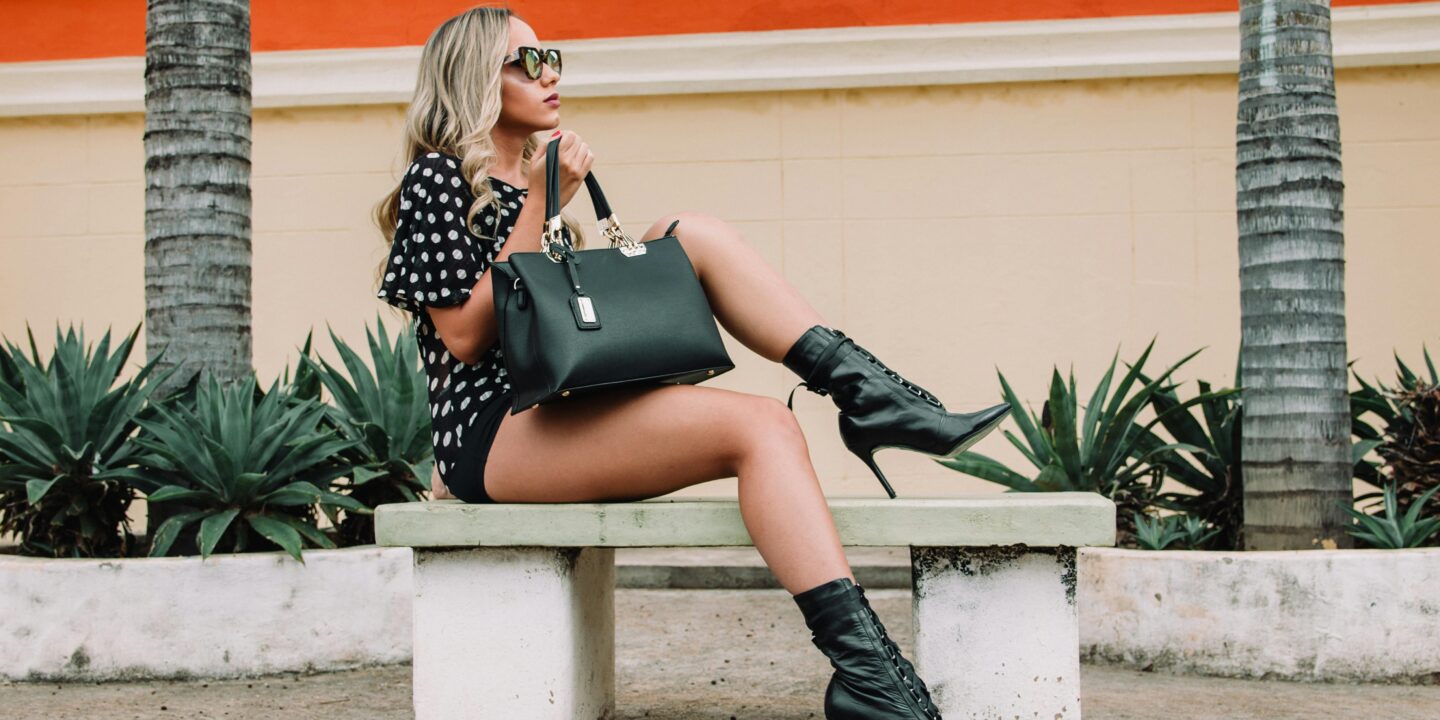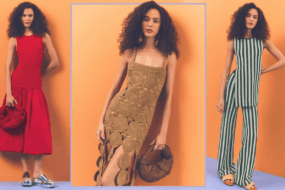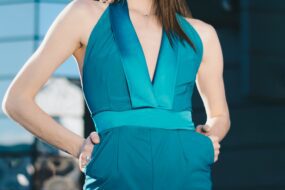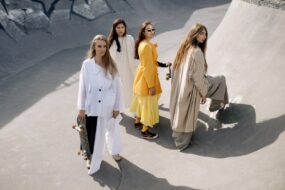
Fashion is more than just clothing; it’s a visual diary of human history, culture, identity, and innovation. Over time, the evolution of fashion has mirrored societal changes—from politics to pop culture, from wars to technological advancements. As trends ebb and flow, the fashion industry has consistently borrowed from the past while pushing boundaries to define the future. This article explores how vintage trends have influenced modern styles and how fashion continues to reinvent itself in the 21st century.
The Roots of Fashion: A Historical Perspective
The origins of fashion trace back thousands of years. In ancient civilizations like Egypt, Rome, and Greece, clothing signified status, class, and occupation. Fabrics, colors, and jewelry choices distinguished royalty from commoners, merchants from slaves. In ancient Egypt, for instance, fine linen, gold jewelry, and elaborate headpieces denoted wealth and social status.
By the Middle Ages, fashion became more structured and modest. Layers of garments, such as tunics, gowns, and cloaks, were common. The Renaissance period marked the beginning of more artistic and extravagant dress, especially among European nobility, with rich fabrics like velvet and brocade, corsets, and ornate embroidery.
The 19th Century: Foundations of Modern Fashion
The 1800s laid the groundwork for many fashion systems we see today, such as haute couture and seasonal trends. Designers like Charles Frederick Worth, often regarded as the first fashion designer, began creating bespoke clothing for elite clients, shifting from anonymous dressmaking to branded fashion.
During the Victorian era, fashion was influenced by modesty, religion, and industrial advancements. Women wore tight corsets, crinolines, and high-necked blouses. The Industrial Revolution brought about new textiles, sewing machines, and mass production, democratizing fashion for the middle class.
Men’s fashion during this time also evolved toward more structured and standardized suits, setting the stage for contemporary formal wear.
The Early 20th Century: Rebellion and Liberation
The early 1900s brought a fashion revolution. The restrictive clothing of the past gave way to more practical and comfortable styles. World War I played a significant role in shifting priorities—utility replaced opulence, and women began entering the workforce in greater numbers, prompting more functional attire.
By the 1920s, the flapper era symbolized female liberation. Women chopped off their hair into bobs, wore shorter dresses, and embraced looser silhouettes. Designers like Coco Chanel popularized jersey fabrics and introduced the iconic “little black dress,” challenging traditional norms and celebrating elegance through simplicity.
The 1930s and 1940s, marked by the Great Depression and World War II, saw a return to conservative styles and rationed fabrics. Yet even within constraints, glamour persisted—think of Hollywood starlets in satin gowns and structured suits.
The 1950s: Post-War Optimism and Femininity
After World War II, the world embraced color, optimism, and prosperity—and fashion reflected it. Christian Dior’s “New Look”, launched in 1947, dominated the 1950s with its cinched waists, full skirts, and ultra-feminine silhouette. It was a stark contrast to wartime austerity and celebrated curves, luxury, and grace.
This era also saw the rise of teenage culture. Poodle skirts, saddle shoes, and letterman jackets defined American youth fashion. On the other hand, global influences like Japanese and Indian textiles began to appear in Western wardrobes, foreshadowing the future of multicultural fashion.
The 1960s: Counterculture and Mod Fashion
Fashion in the 1960s reflected a time of cultural revolution. The civil rights movement, feminism, and anti-war protests brought a shift in consciousness—and style. London became the epicenter of youth fashion with the Mod movement, marked by mini skirts, go-go boots, and geometric patterns.
Designers like Mary Quant revolutionized women’s fashion with bold, playful, and youthful designs. Simultaneously, the hippie movement rejected mainstream trends in favor of ethnic prints, handmade garments, and natural fabrics, reflecting ideals of peace, love, and rebellion.
The 1970s: Eclectic Expression
The 1970s were all about self-expression. It was a decade where boundaries blurred between high fashion and subcultures. Glam rock, disco, punk, and bohemian styles coexisted, each with distinct aesthetics.
Bell-bottoms, platform shoes, sequins, leather jackets, and flared sleeves became widespread. Designers like Vivienne Westwood pushed punk aesthetics into mainstream consciousness, while the disco craze brought shimmering jumpsuits and metallic fabrics to the dance floor.
This decade also embraced gender fluidity in fashion, challenging rigid norms. Artists like David Bowie and Grace Jones exemplified this freedom in style.
The 1980s: Excess and Power Dressing
If the 1970s were eclectic, the 1980s were extravagant. With the rise of consumerism, media influence, and pop icons like Madonna and Prince, fashion became bold, colorful, and unapologetically maximalist.
The “power suit” became symbolic of women’s entry into corporate culture. Shoulder pads, tailored blazers, and pencil skirts projected strength and authority. Meanwhile, streetwear began emerging through hip-hop culture, with brands like Adidas and Nike gaining popularity.
Fitness fashion also took center stage with leg warmers, spandex, and aerobics gear—thanks to the popularity of workout videos and a growing fitness obsession.
The 1990s: Minimalism and Streetwear
A reaction to the excess of the ‘80s, the 1990s leaned into minimalism and casual wear. Fashion became more subdued, comfortable, and relaxed. Brands like Calvin Klein and Donna Karan championed simple, clean lines, while Kate Moss and the “heroin chic” look defined runway aesthetics.
Simultaneously, streetwear evolved from subcultures like skateboarding, hip-hop, and grunge. Flannel shirts, Doc Martens, baggy jeans, and graphic tees became symbols of anti-fashion fashion. Designers such as Marc Jacobs bridged high fashion with youth subcultures, paving the way for modern street-luxury hybrids.
The 2000s: Pop Culture and Tech Influence
The turn of the millennium brought an explosion of styles—some experimental, others nostalgic. The early 2000s saw low-rise jeans, bedazzled tops, trucker hats, and visible thong straps—largely influenced by celebrities like Britney Spears, Paris Hilton, and Jennifer Lopez.
Meanwhile, fashion was beginning to feel the influence of technology. Fast fashion brands like Zara and H&M rose to prominence, rapidly replicating runway trends for the masses. Social media started to play a small, yet growing, role in shaping fashion decisions.
The late 2000s also ushered in the rise of bloggers and digital influencers, shifting power from traditional magazines to online platforms.
The 2010s: The Rise of Individualism
The 2010s marked a major turning point: fashion became more democratized than ever before. With Instagram, YouTube, and TikTok, everyone became a potential style icon. Trends emerged from the street, not just the runway. Influencers replaced supermodels as the main faces of fashion.
The decade also saw the resurgence of vintage and thrifted fashion. Sustainability concerns and nostalgia sparked interest in retro styles from the ‘80s and ‘90s. Mom jeans, crop tops, chokers, and windbreakers returned to wardrobes.
High fashion also embraced streetwear. Brands like Off-White, Supreme, and Yeezy blurred lines between luxury and everyday wear. Collaboration became a major trend—think of Louis Vuitton x Supreme or Adidas x Gucci.
Modern Styles: Where We Are Today
Today’s fashion is an amalgamation of the past and present. The industry is more inclusive, diverse, and conscious than ever before. Body positivity, gender-neutral fashion, and sustainability have become central to design philosophies.
Modern styles are less about rigid trends and more about personal expression. TikTok aesthetics like “cottagecore,” “dark academia,” “Y2K,” and “clean girl” represent how the digital generation defines style. Rather than following one universal look, people now curate their own identities using fashion.
Technology has also redefined the fashion landscape. Virtual fashion shows, digital clothing (NFT fashion), and AI-generated designs are pushing the boundaries of creativity. Brands are also leveraging 3D printing, augmented reality, and wearable tech to craft futuristic apparel.
The Vintage Revival
Ironically, modern fashion is experiencing a profound love for the past. Vintage fashion isn’t just a niche; it’s become a movement. Gen Z and Millennials are diving into thrift shops and vintage archives to unearth one-of-a-kind pieces. Fashion cycles now revive styles from past decades at record speed.
This nostalgia-driven revival isn’t just aesthetic—it’s also ethical. Vintage fashion offers a sustainable alternative to fast fashion by reducing waste and celebrating quality craftsmanship.
Icons like Harry Styles and Zendaya are known for mixing vintage with contemporary pieces, proving that fashion’s future lies in a seamless blend of eras.
Conclusion: Fashion as a Living, Breathing Art Form
From the corseted gowns of the Victorian era to the androgynous streetwear of today, fashion has evolved into a form of storytelling, self-expression, and social commentary. Each era reflects its time—its struggles, values, and dreams.
As we move forward, fashion will continue to oscillate between the old and the new. Technology, sustainability, inclusivity, and personal freedom are shaping the future. But even as we chase the next trend, the timeless charm of vintage styles will always remain—reminding us that fashion is not just about looking good, but about connecting with who we are and where we’ve been.
Fashion is cyclical, but never stagnant. It’s a mirror, a map, and a manifesto—all stitched together by the fabric of humanity.






















